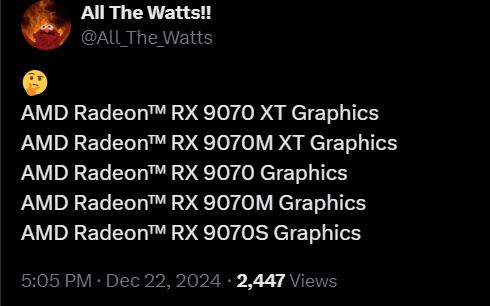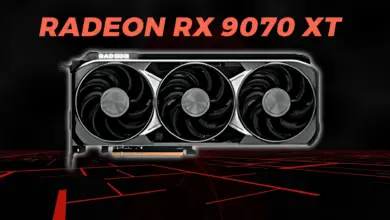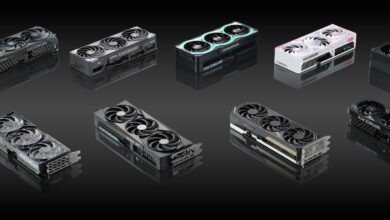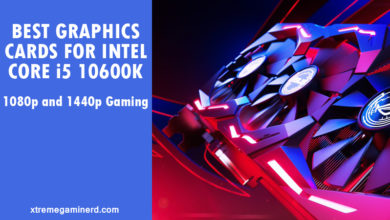There will be several RX 9000 sub-families, using the Navi 44 and Navi 48 GPUs. The Navi 48 will power the Radeon RX 9070 XT and 9070, which are going to compete with the NVIDIA’s RTX 4080 GPU but the Navi 44-based GPUs will be more in number.
Navi 48 to Power the RX 9070-Class Cards While Navi 44 will be Available in Several Cut-Down Versions

A huge leak has just confirmed the naming convention of the upcoming AMD’s RDNA 4-based graphics cards. Unlike what was thought previously, AMD won’t be going with the RX ‘8000’ naming convention but will instead skip to the RX 9000 naming scheme for these GPUs. This is apparently because AMD’s Strix Halo APUs come with Radeon 8000-series iGPUs, which could create some confusion.
One of the reliable leaks is the presence of the RX 9000 naming convention on a retailer called Grosbill Pro, which revealed two RDNA 4 models: AMD Radeon RX 9070 XT and AMD Radeon RX 9070. Both are currently visible in the filter section of the e-commerce platform under AMD. Apart from this, a leaker by the name @All_The_Watts has posted a list of graphics series and graphics card model names belonging to the RX 9000 series.
- Radeon RX 9070 series
- Radeon RX 9060 series
- Radeon RX 9050 series
- Radeon RX 9040 series
These are the supposed RDNA 4 GPU families that will contain both the desktop and laptop GPUs. While apart from the RX 9070 XT and RX 9070, we don’t have a solid for other GPU model names, the leaker has posted a few more GPUs as below:
- Radeon RX 9070M XT
- Radeon RX 9070M
- Radeon RX 9070S
The RX 9070 GPUs for both desktops and laptops will utilize the Navi 48 die, which is said to be the fastest among the two GPU dies AMD will be using. If the report is true, only the RX 9070 graphics cards will be powered by the Navi 48. However, the Navi 44 will be available in various configurations, both in full and cut-down versions. The full Navi 44 die supposedly brings up to a 128-bit memory bus for the GPUs and could be available with as little as a 96-bit bus.
Thus, the memory configuration with the full die will be either 8GB or 16GB while the 96-bit will remain at up to 6GB or 12GB. It’s unlikely that AMD could ship a GPU with a 96-bit bus with 12GB VRAM, which means the cut-down Navi 44 GPU with 6GB VRAM isn’t going to be something that could cater to the demands of modern games. However, as AMD did launch such entry-level GPUs before in the RDNA 2 lineup (like RX 6400 and RX 6500 XT with 64-bit bus), it’s not entirely possible to see such a weak GPU.
As for the Navi 48, it is expected that the GPU will bring a 256-bit bus, and looks like the previous rumors about a cut-down Navi 48 die with a 192-bit bus may not be true. We still need more information to confirm this, which should be available in a few days as we come closer to the official launch of these GPUs at CES 2025.








